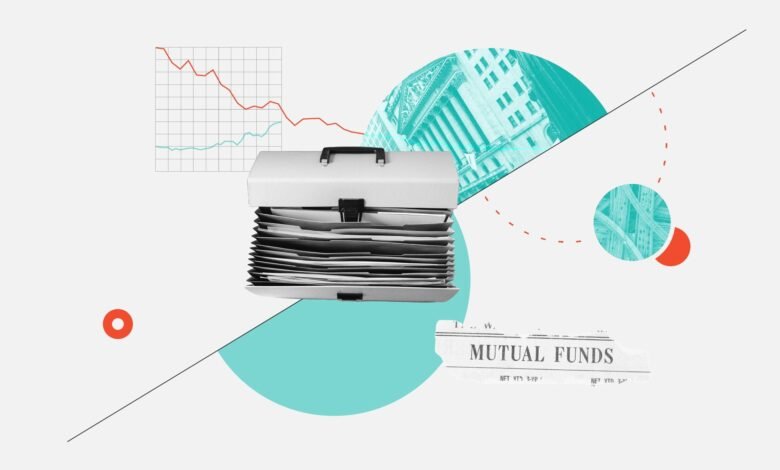What Short-Term Fund Performance Tells Us About Future Returns

Persistent outperformance is one of the most sought-after characteristics of mutual funds and exchange-traded funds. Do top-performing funds show an ability to stay at the top year after year?
Fund prospectuses typically present information on absolute and relative returns, but they rarely reflect a fund’s ability to outperform or underperform year over year. Persistence ultimately provides the most meaningful insight into the quality of an investment. Consistent outperformance demonstrates the ability of a manager or strategy to achieve its objectives repeatedly over time, but such cases are rare.
Morningstar’s new report, Persistence in Mutual Fund and ETF Performance, looks at year-over-year total returns and attempts to answer the question: How likely is a top-performing mutual fund or ETF to maintain its standing as a top performer? It also investigates circumstances that may influence persistence, or lack thereof.
Key Takeaways
- One-year outperformance is a poor predictor of future outperformance. Few funds that ranked in the top quartile of their category maintained that position over the subsequent one, two, or three years.
- Passive funds do not exhibit greater year-over-year persistence at remaining in the top quartile of their category than actively managed funds.
- The year-over-year persistence of active funds resembles a random walk.
- Passive funds have greater chances at landing near the middle of their category from one year to the next.
- Periods of high market volatility can disrupt performance trends and reduce persistence.
Weighed and Measured
Investment persistence looks at how well a fund performed and if that performance can be replicated in the future. One way to accomplish that is to identify top-performing funds within a category and see if they remained a top performer in subsequent years.
The chart below shows one-year persistence for actively managed mutual funds and ETFs, or the number of such funds that landed in the top quartile of their category in 2021 and remained in the top quartile over the subsequent three years.
The number of funds that remained in the top quartile of their category declined quickly across the board. Few top-quartile funds remained in their category’s top quartile in 2022, and even fewer persisted through 2023. All top-quartile funds failed to retain their category relative standing for three consecutive years in 11 of the 20 categories through 2024.
Passively managed funds fared no better. The next chart shows that the outcome was worse for passive funds than for active ones in many categories. Many failed to crack the top quartile in 2021, let alone persist over the next three years.
Passive funds in the large-blend and large-growth categories were the exceptions. Part of the reason is that the short-term category relative performance of a passive index fund is closely tied to the success or failure of its market segment. That observation tends to hold because an index is fully invested and often the purest representation of a market segment. US stocks in the large-blend and large-growth categories performed exceptionally well in 2021, while other segments struggled.
What Are the Odds?
Historical probabilities shown in the table below also suggest a degree of randomness to short-term persistence. The chances of landing in one of the quartiles, or columns two through five, would be a little less than 25% if the outcomes were completely random. That accounts for a small portion of funds that change categories or cease to exist through mergers or liquidations. With few exceptions, the realized probabilities were close to that figure.
The results looked a little different for passive funds, which are shown in the next table. The historical probability of a fund with a second-quartile total return landing in the second quartile the next year was just shy of 50%. Similarly, a fund with a third-quartile total return had a 36.4% probability of landing in the second quartile and a 32.3% chance of landing in the third quartile. That means many passive funds with middling one-year returns tend to have middling returns the next year, too.
Why does their short-term persistence look so average? The composition of passive funds often looks a lot like the average of their peers, so it makes sense that their short-term returns tend to be m average.
The Momentum Effect
Tendencies of the momentum anomaly may lend some further insight. Momentum relies on the observation that recent past performance tends to persist into the near-term future. In practice, that usually means a stock’s return over the prior six to 12 months tends to reasonably predict its return over the next year. But the effectiveness of that signal deteriorates soon after.
The observation that active mutual fund and ETF persistence deteriorates within a year is consistent with the momentum concept. The chart below shows the probability of a top-quartile fund remaining in the top quartile over the ensuing months and years. For one-, three-, and six-month horizons the probability was just shy of 30%, and it started to decline for periods of one year and longer.
Persistent outperformance among active mutual funds and ETFs is more attainable when markets are stable and predictable. Steady markets provide an easier environment for top managers or strategies to sustain their success, whereas uncertain and volatile markets create greater variability in outcomes, making consistent outperformance hard to sustain.
The chart above indicates that during calmer periods, managers’ performance tended to be more persistent. Between 2016 and 2019, when market volatility was generally low, the average one-year chance of remaining in the top quartile frequently exceeded 30% and occasionally approached 40%. By contrast, it declined in periods of high volatility. Volatility spiked in early 2020, and probability dropped to around 15%, the lowest level in five years. This underscores the greater difficulty of sustaining top-quartile performance during choppy markets.
Short-Term Meets Long-Term
As the time horizon increases, past performance becomes less important in determining a fund’s category relative performance. Fees, investment process, managers, and category become more important.
Morningstar’s US Active/Passive Barometer report summarizes long- and short-term success rates for active managers against their passive peers. Those reports find that active managers can have reasonably high success rates over one-year periods, but success rates decline as the time period increases. Those rates vary across categories. Many passive funds are designed to be average, and it turns out that average returns year after year translate to above-average long-term outcomes.
What’s the lesson? Top-tier total returns rarely persist from one year to the next, regardless of the investment approach (active or passive).






